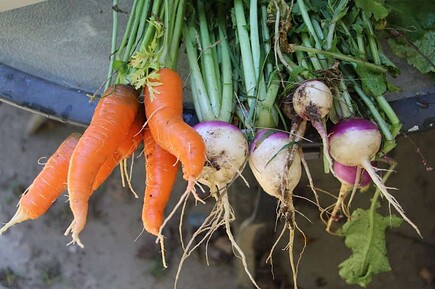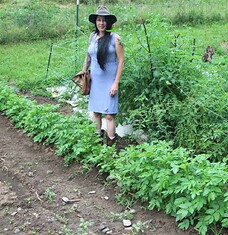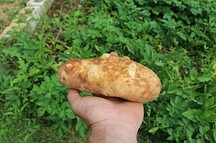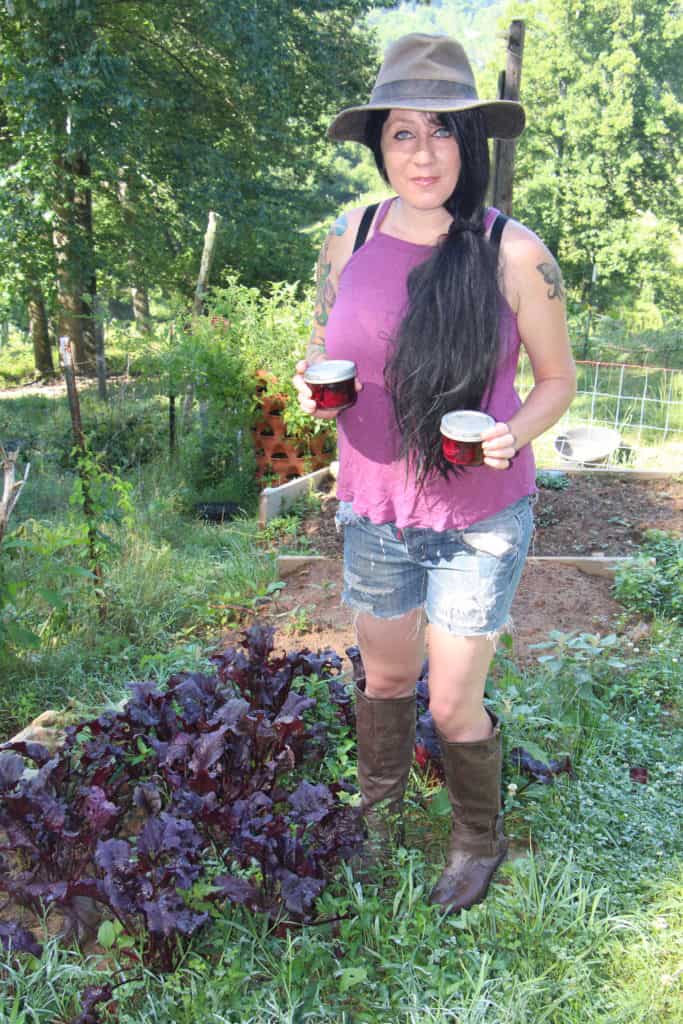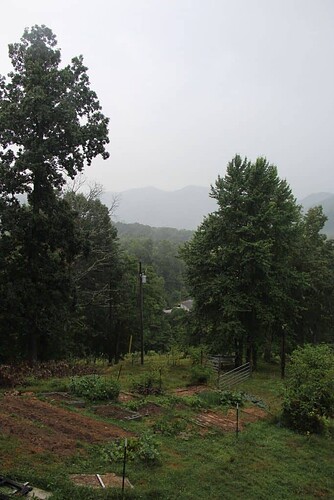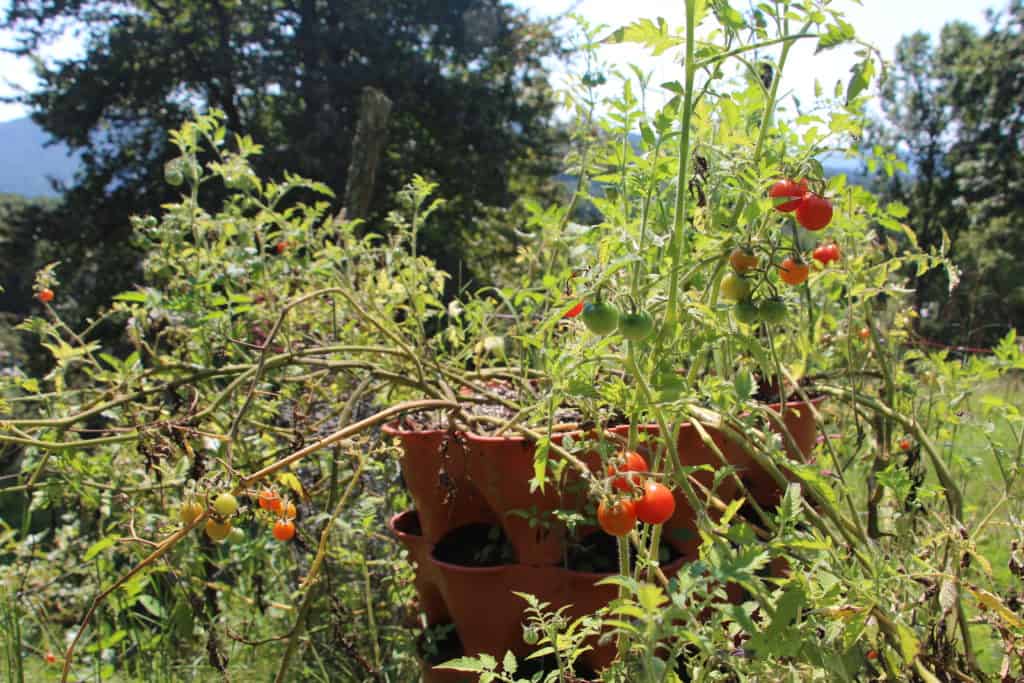Despite the frigid temperatures in many parts of the country, Spring is just around the corner. And with it: the return to gardening.
Planning out your Spring garden can bring some joy and light to your life while temps are still low. Seed companies have already sent out a lot of catalogs to help inspire.
Current economic conditions and the COVID-19 pandemic make it likely that we'll see seed shortages again later in the growing season. If you want to grow a garden in 2021, it's advisable to start securing your seeds as soon as you can.
What Should You Grow?
Generally, it's a good idea to grow the more expensive vegetables that your family likes to eat regularly.
For example, it makes more sense to grow a bed of organic salad greens that cost $7/lb at the grocery store than a bed of potatoes that cost $0.50/lb.
Dedicate the majority of your space to the pricey veggies and then fill in the other room with whatever you want. Or buy the inexpensive vegetables at the grocery store or through a local farmer's market or cooperative.
Calories mean a lot. Some of you reading this may be more concerned with getting the most calories out of your space rather than what costs the most at the grocery store.
If this is your main concern, then calorie-dense potatoes are a better idea than lettuce. Though of course, you can grow a lot of lettuce in a small space if you remember to reseed regularly, so it is easy to find a good balance to meet your priorities and objectives.
Consider which vegetables offer the most nutritional value and calories per sq ft of garden space. Luckily many of the highest-yielding crops also contain the most calories.
Out of the list below, collards and radishes have the least caloric value.
Spring Garden Crops With Highest Yield Per Sq Ft
- Potatoes
- Beets
- Turnips
- Rutabagas
- Radishes
- Collards
Determining When To Plant
I live in USDA Zone 7, and my husband has already planted a lot of different veggies. He's planted beets, rutabagas, turnips, Romaine lettuce, mustard, chard, snow peas, cabbage, bok choi, collards, kale, red lettuce, cilantro, and green bunching onions.
Those in colder climates can start seeds indoors or utilize cold frames to get a headstart on the growing season, or just wait until the ground is workable.
Microclimates and USDA Zones
The USDA Zone Map is the standard that many gardeners use to determine what will grow in their area.
It's a handy tool, but it doesn't take into account microclimates. It's possible to live in Zone 7 technically but have growing conditions closer to Zone 6B.
I live in the mountains of Western North Carolina on a Southern slope. When it snows here, ours will melt off quickly when temperatures rise. Just a mile up the road, the snow can stick for a week longer or more. It's a dramatic difference over such a short distance.
It's crucial to observe these things so that you can choose the right crops to grow.
Click here for an interactive USDA Zone Map. You can zoom in on your state and get a more accurate picture of what zone you are actually in.
Average Last Frost Date
Frost dates are another factor that can vary a bit based on topography within a region.
It's best not to plant tender starts and crops suited for hot weather until the last frost has passed. Sometimes you can get away with protecting them on a few cold nights using row covers or special plant covers.
Where I live, the average last frost is May 12. My husband's parents are a 35-minute drive away and have their average last frost 1-2 weeks before that.
Testing Your Soil
Soil test kits are inexpensive and easy to use. Any major online retailer or farm and garden store sells them.
Testing your soil will tell you the data you need to determine how much fertilizer or other soil amendments you'll need for a bountiful crop. You'll also learn the pH of your soil, another important factor.
The type of soil you have on your property can vary if you have a larger parcel, so you will want to test each major planting site.
Obtaining Seeds
At the start of the COVID-19 pandemic, there was a major shortage of seeds. The inventory of both small and large seed companies sold out fast.
I remember some companies stopped taking orders for most of the week. I set my alarm to get up and put my order in as soon as they opened up a two-day window for new orders.
If you plan to grow anything this year, I advise ordering any of the seeds or plant starts you need right away. Even if they don't ship out until later, you can reserve them by paying in advance. If you plan on purchasing at brick-and-mortar stores, pick them up as soon as you see them on the shelf.
Generally speaking, if you need a lot of one particular type of seed, you're better off ordering from a seed catalog that sells different size packets. Some farm and garden stores sell seeds by the scoop, which also offers bulk pricing.
Here are a few seed suppliers that offer high-quality seeds and gardening supplies.
Open Pollinated Vs. Hybrid Seeds
Hybrid seeds get a lot of bad press because you can't save the seeds and then expect to get the same crop next year if you plant them then. The advantage of hybrids is that they can help with disease resistance and yield. If you don’t plan on saving seeds, growing some hybrids will work fine for you.
Open-pollinated or "heirloom seeds" produce fruit and vegetables that yield seeds that you can save and use to plant next year. From a sustainability standpoint, please choose open-pollinated or heirloom seeds. Some heirloom seeds are rarer than others, so you might have to pay a little more for your seeds. The additional cost is very minimal and well worth it.
Crops grown from some heirloom seeds often fetch a higher price at farmer’s markets. A good example is tomatoes. I live in an area that produces a lot of commercial tomatoes. A 25 lb box of conventional tomatoes costs around $10-$12. But a box of Cherokee Purple or other heirlooms is $25-$35.
Setting Realistic Goals
Gardening can be very enjoyable, but it takes some work too.
If you've never gardened before, you might consider starting with a smaller-sized one. Starting smaller will help you learn and develop your green thumb.
And don't forget that gardening is a project that can involve the whole family. Don't take it all on yourself; recruit the family members and/or neighbors who will enjoy eating the joys it produces.
Spring Garden Veggies That Are Easiest To Grow
Note: the colder the climate, the later in Spring you'll need to planet these.
If you're a new gardener, you may be wondering what's easiest to grow.
The following vegetables offer good results with minimal inputs.
- Lettuce
- Spinach
- Potatoes
- Carrots
- Rutabagas
- Turnips
- Radishes
- Chard
- Green Bunching Onions
- Broccoli
- Snow Peas
- Cabbage
- Bok Choi
- Collards
- Beets
- Kale
- Chives
- Cilantro
Fertilizing Your Garden
I previously mentioned testing the soil in your garden. The results can help you determine overall fertility.
For most Spring gardens, adding a little fertilizer is a good idea. How much you need depends on the crop you're growing and how suitable your starting soil is.
Some crops will strip out nutrients faster than others. Adding fertilizer ensures that you're putting back as much or more than you are taking away.
Organic vs. Conventional Fertilizers
Gardeners have the choice between organic and conventional fertilizers.
Organic fertilizers come from composted animal by-products or plants. Both are available in dry or liquid forms.
Common Organic Fertilizers
- Mulch
- Bone Meal
- Blood Meal
- Manure Based
- Fish Emulsion
- Mushroom Compost
- Mixed Compost
There are organic fertilizers that are all-in-one and very specific to growing needs. We often used Garden Tone.
Local feed and farm supply stores are known to offer discounts if you buy a lot of fertilizer at once. Local stores also have access to fertilizers that you can't purchase online without paying exorbitant shipping fees.
Organic fertilizers are less likely to burn plants because they tend not to be as concentrated as conventional fertilizers. If you accidentally over-fertilize a bit, organic fertilizers are far less likely to cause crop damage or loss. Of course, if you apply too much, even organic fertilizers can cause losses.
Common Conventional Fertilizers
- Miracle-Gro
- 10-10-10
- Scott’s
Conventional fertilizer is comprised of naturally occurring components but is heavily processed.
A product like 10-10-10 or 17-17-17 is very concentrated. Concentrated fertilizers are great for storing for a long-term emergency. A single bag can go a long way.
The disadvantages of conventional fertilizer are that it is a lot easier to over-fertilize and can create runoff that contaminates waterways. Too much fertilizer can severely damage or even kill your plants.
Whether using organize or conventional fertilizer, it's important to follow the guidelines provided on the bag and check a good gardening book for fertilizing tips. Some vegetables are heavier feeders than others and require more plant food to get the maximum yield for your area.
Maximizing Your Growing Space
Edible Landscaping
Edible landscaping has become very popular. Plenty of people are switching from ornamental plants and trees to those that can provide food for the table.
Anywhere that you have shrubby things or ornamentals planted, you could be growing food instead. The same goes for lawns.
While I completely understand wanting to have some lawn for your kids or dogs to use, consider using half or more for vegetable and fruit production if you have a huge yard. Fruit trees can provide shade and allow the area below to be a nice place to sit or play.
Container Gardens
For those without much/any available outside area, you can maximize your growing space by using window boxes and containers where you have some extra room.
Container gardens and window boxes are great for people that live in apartments, condos, and townhouses. And hanging baskets are another great container that can add a lot of beauty to your home.
Here are just a few of the crops you can grow in a container.
- Cherry Tomatoes
- Tomatoes
- Garlic
- Onions
- Lettuce
- Arugula
- Spinach
- Potatoes
- Blueberries
- Strawberries
- Columnar Apple Trees
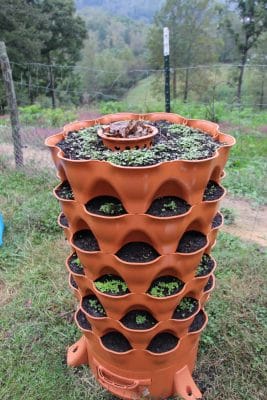 ( I received a Garden Tower in exchange for an honest review. A Garden Tower is nice for making the most of your space but the cost is prohibitive for many.)
( I received a Garden Tower in exchange for an honest review. A Garden Tower is nice for making the most of your space but the cost is prohibitive for many.)
Troubleshooting Common Gardening Problems
Onions
When ordering onions, it's important to make sure you get onions that are suitable for the number of daylight hours you have during the growing season.
Follow this link to determine what onions are suitable for your area.
I order from Dixondale Farms. They are located in Texas and have very reasonable prices.
If you buy your onion starts locally, you don't have to worry about getting the right type. Local feed stores are a great place to get onion bulbs to start.
Tips for Carrot Success
When people have trouble growing carrots, it is often due to hard, rocky, or clay soils. You can loosen the dirt up by adding some sand and tilling well.
Another thing that helps enormously is growing shorter and fatter varieties of carrots. These carrots do well in heavy soils and produce an abundant crop.
Disease & Pest Control
Over the years, my husband and I have noticed that many beginning gardening articles overlook spraying. It's just not something that people like to address.
Pretty much everyone I know uses some sprays or powders in their gardens to deter disease and insects. The choice between organic and conventional pest and disease control is yours. Most things can be managed quite well with organic sprays and practices.
Considering how common supply chain shortages are these days, you should stock up on some disease and pest control products at the same time you buy your seeds.
Below are a few common organic sprays and powders that you can utilize in an organic garden.
Always follow the instructions and wear the appropriate personal protective gear. Just because something is organic doesn’t mean it won’t cause irritation or other serious health issues if inhaled or ingested.
- Copper - Control common fungi like tomato blight.
- Neem - offers some protection from mildews and will eliminate and deter insects.
- Milky Spore - Spread this powder every ten years, and you will see a substantial reduction in Japanese Beetles and grubs.
- Sulfur - This comes in a water-soluble powder form that you can use in a sprayer or use in a duster to control powdery mildew, rust, scab, brown rot, and rose black spot.
- Pyrethrin - Effective against a wide range of insects. Pyrethrins are derived from chrysanthemums. This spray is sold under the brand name Pyganic. Another popular insecticide called Permethrin is the synthetic and non-organic version of pyrethrin. It's easy to mistake one for the other when purchasing.
- Spinosad - Controls Japanese Beetles and other hard-shelled insects. Spinosad has negative impacts on bee populations, so make sure not to use it if you or your neighbors have bee hives.
- Stylet Oil - Effective against powdery mildew, as an insecticide, and for virus control. Do not mix with sulfur ore or copper.
- Dr. Earth Final Stop - This spray controls powdery mildew, rust, black spot, peach leaf curl, shot hole, leaf blotch, scab, dollar spot, brown rot, fusarium blight, botrytis, downy mildew, scab anthracnose, phytophthora blight, and other plant diseases.
- Potassium Bicarbonate - This powder is frequently sold under the brand names Green Cure or Mil Stop. It's effective against powdery mildews.
It's always less expensive to buy the concentrated forms of garden sprays and dilute them in a hand sprayer or spray bottle at the time of application.
You should mix sprays immediately before use. Some sprays start to lose their potency 24-48 hours after they are mixed. Buying concentrates also reduces how much space your sprays will take up in your storage areas.
Reseeding
Some crops do best if you reseed regularly.
For example, if you want to have a continuous supply of salad greens or carrots, you need to reseed every few weeks. When you plan out your garden and order seeds, it's important to order extras of the crops you're planning on continuously harvesting.
In some areas, salad greens and carrots can be grown practically year-round with the help of a small cold frame or some row covers.
Grow Your Transplants For Summer Plantings
Buying started plans can be expensive. When you're starting your spring garden, you might consider getting some peat pellets or growing trays so that you can get a head start on your summer garden. A heating pad that goes under starting trays can help speed the process along.
Growing your transplants enables you to have transplants ready to go that you cannot buy at local stores. Some of the heirloom varieties of vegetables are impossible to find as transplants, so you must do them yourself or direct seed in your garden.
Remember that the bigger your transplants are when that all-important last frost date arrives, the sooner you'll be enjoying the bounty of your gardening efforts.
Recommended Books & Resources
Lasagna Gardening: A New Layering System for Bountiful Gardens: No Digging, No Tilling, No Weeding, No Kidding! By Patricia Lanza
Lasagna Gardening for Small Spaces: A Layering System for Big Results in Small Gardens and Containers By Patricia Lanza
The Encyclopedia of Country Living By Carla Emery
Rodale's Illustrated Encyclopedia of Organic Gardening
For (many) more great gardening book recommendations, check out Peak Prosperity's The Essential Gardening and Food Resilience Library
Also, your local cooperative extension service website should have some great local gardening advice and info.
Conclusion
A well-planned Spring garden means greater food security during uncertain times.
Anything you can do to reduce trips to the grocery store will save money. With inflation on the rise, growing some of your food helps insulate your family from rising food costs.
You also eat healthier when you have a garden. My husband and I aren't the only ones who have seen health benefits like reduced heartburn and indigestion when eating fresher and more nutritious foods.
So get started!
And don't forget to buy seeds as soon as possible to avoid possible supply disruptions or total lack of availability due to economic conditions and the COVID-19 pandemic.
Are you planning your spring garden? Do you have any questions about Spring gardening? Please ask in the comments section and I will do my best to answer them for you!
This is a companion discussion topic for the original entry at https://peakprosperity.com/planning-your-spring-garden/
